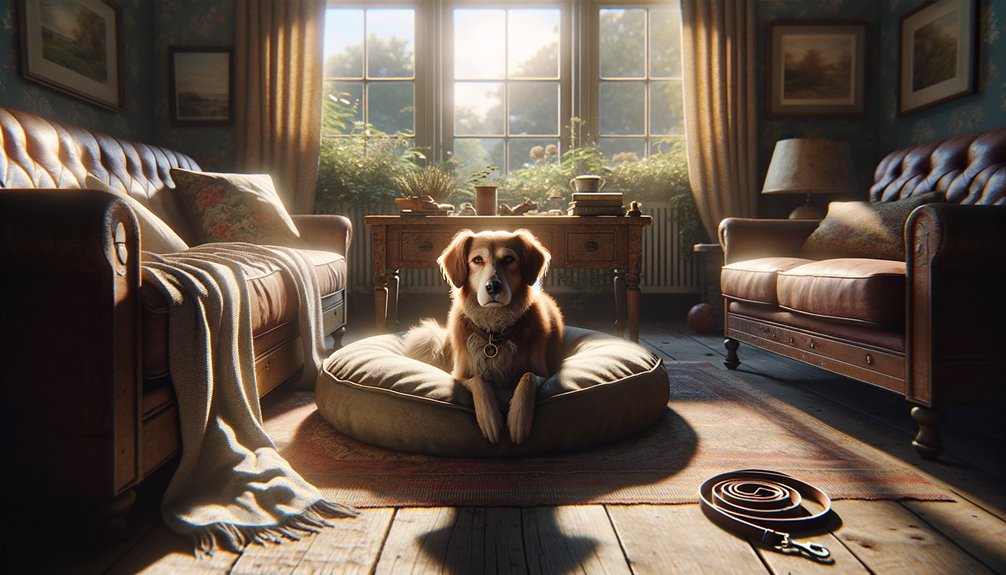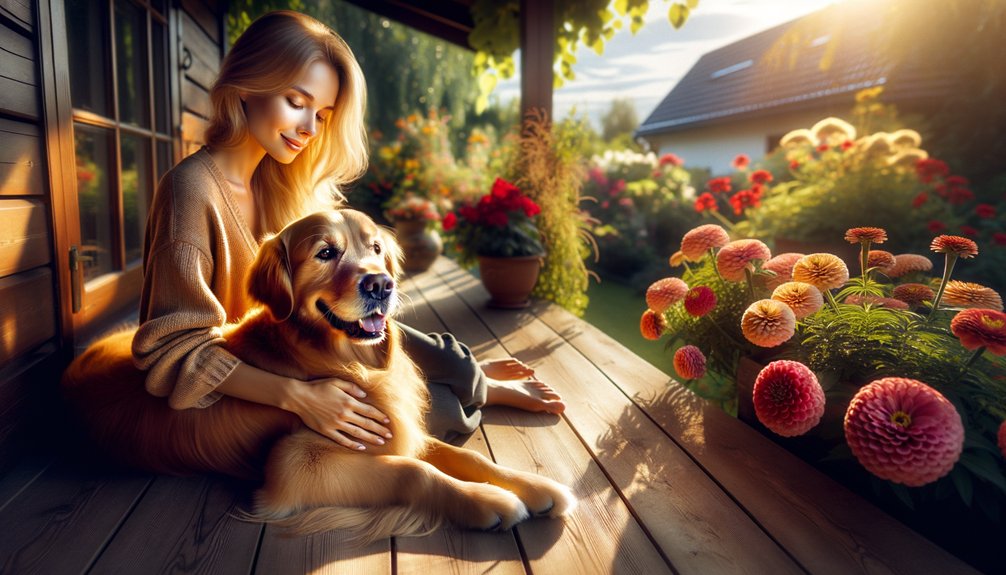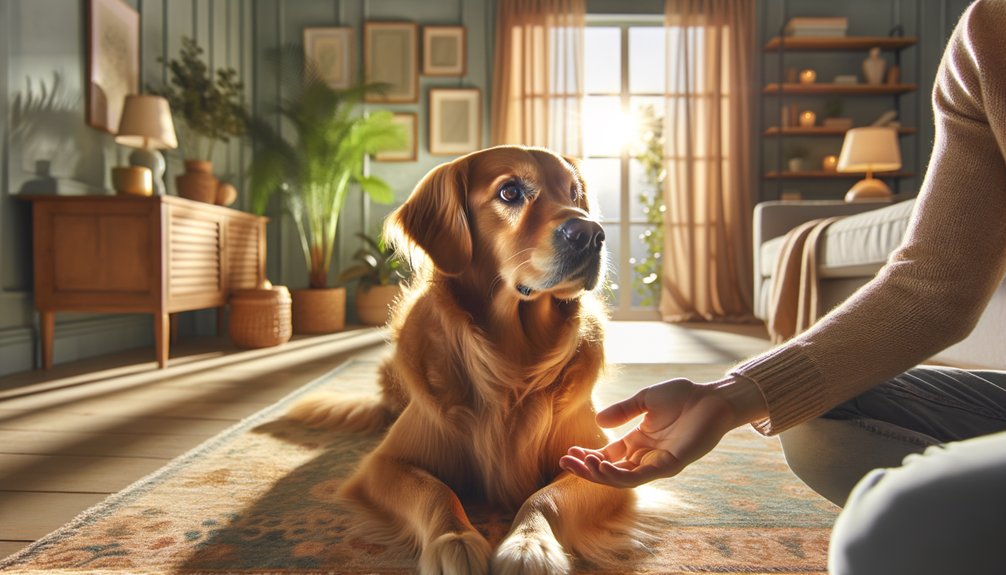Just as a flower wilts without sunlight, your dog can struggle when left alone. Separation anxiety isn’t just a behavioral issue; it’s rooted in biological instincts and environmental factors. Understanding these triggers can lead to a calmer, happier companion. By exploring transformative techniques and personalizing strategies, you can help your furry friend find comfort in solitude. The journey starts with empathy and connection—are you ready to access your dog’s heart? Start your journey to soothe your dog’s separation anxiety with holistic insights and strategies—discover how to unlock their heart today.
Key Takeaways
- Understand your dog’s natural instincts and attachment needs to foster empathy and strengthen your bond.
- Identify environmental stressors that may trigger anxiety, such as loud noises or routine changes.
- Implement desensitization techniques by gradually increasing alone time with positive reinforcement.
- Create a comforting environment with familiar objects and calming aids to ease anxiety.
- Seek professional guidance if necessary, ensuring consistent evaluation and adjustment of strategies for better outcomes.
The Science Behind Canine Emotions: What Triggers Separation Anxiety?

Understanding the triggers of separation anxiety in your dog starts with recognizing their biological instincts and attachment needs.
Factors like changes in environment or daily routine can greatly impact their behavior and emotional state.
Biological Instincts and Attachment
While you may see your dog as a loving companion, their emotional world is deeply rooted in biological instincts and attachment patterns shaped by evolution.
Dogs have evolved to bond closely with humans, leading to instinctual behaviors that can trigger separation anxiety. Understanding these biological bonds helps you empathize with their feelings.
Here are four key elements of canine attachment:
- Pack Mentality: Dogs are pack animals, craving closeness and connection.
- Dependence: They rely on you for safety and stability.
- Separation Response: When left alone, their instinctual fear can surface.
- Emotional Echo: They pick up on your emotions, heightening their anxiety.
Recognizing these instincts fosters a deeper connection between you and your furry friend.
Environmental Stressors Impacting Behavior
Even if you provide a loving home, various environmental stressors can considerably impact your dog’s behavior and emotional well-being.
Dogs are sensitive to their surroundings, and specific environmental triggers can exacerbate separation anxiety. For instance, loud noises—like thunder, fireworks, or even vacuum cleaners—can heighten your dog’s noise sensitivity, leading to increased anxiety when left alone.
Changes in routine, new family members, or unfamiliar environments can also create stress for your pup.
It’s important to observe how these factors influence your dog’s emotions and behavior. By understanding these triggers, you can create a more calming environment, helping your furry friend feel secure and loved, ultimately reducing the severity of their separation anxiety.
Real-Life Stories: How Pet Parents Transformed Their Dog’s Approach to Alone Time

As you navigate the challenges of separation anxiety in your dog, you might find inspiration in the stories of pet parents who successfully transformed their furry companions’ approach to alone time.
These success stories highlight transformative techniques that can change everything:
- Desensitization Games – Gradually increasing alone time while offering treats.
- Comfort Objects – Providing a favorite blanket or toy to soothe them.
- Routine Building – Establishing a consistent departure and arrival routine.
- Calming Aids – Utilizing pheromone diffusers or anxiety wraps for comfort.
These pet parents didn’t just find solutions; they created environments where their dogs felt secure and confident.
With empathy and patience, you too can foster a sense of belonging for your dog, paving the way for a calmer, happier experience during those solo moments.
Your Customizable Roadmap: Step-by-Step Strategies for a Calmer, Happier Dog
Creating a customized roadmap for your dog’s anxiety can feel overwhelming, but by breaking it down into manageable steps, you can foster a sense of security and happiness in your pet.
Start by evaluating your dog’s triggers during alone time. Use customizable strategies like gradual desensitization—begin with short separations and slowly increase the duration. Incorporate positive reinforcement by rewarding calm behavior when you leave and return.
Evaluate your dog’s triggers and use gradual desensitization with positive reinforcement to ease their anxiety during separations.
Establish a comforting environment with toys or calming scents to ease their anxiety. Consistent routines can also help your dog feel more secure.
Finally, consider professional support, like a dog trainer or behaviorist, if needed. With patience and dedication, you’ll guide your furry friend towards a calmer, happier life.



